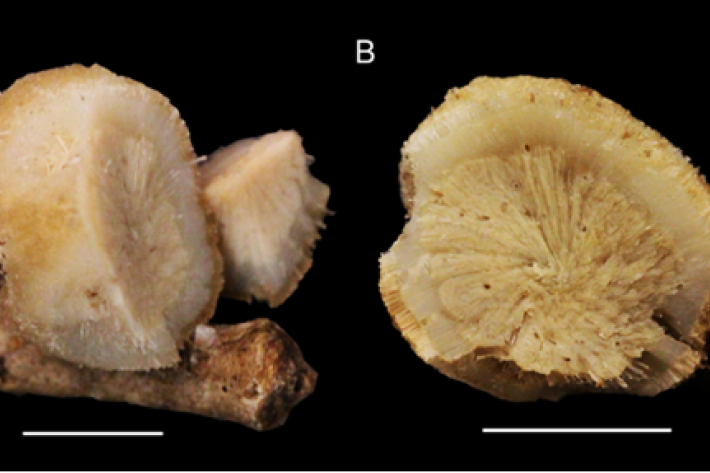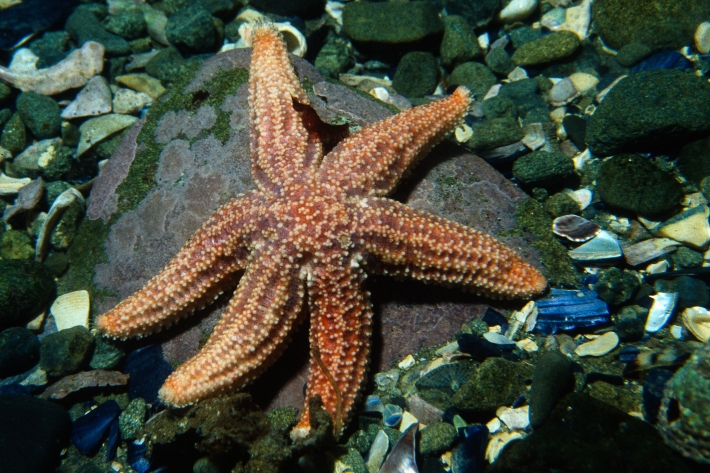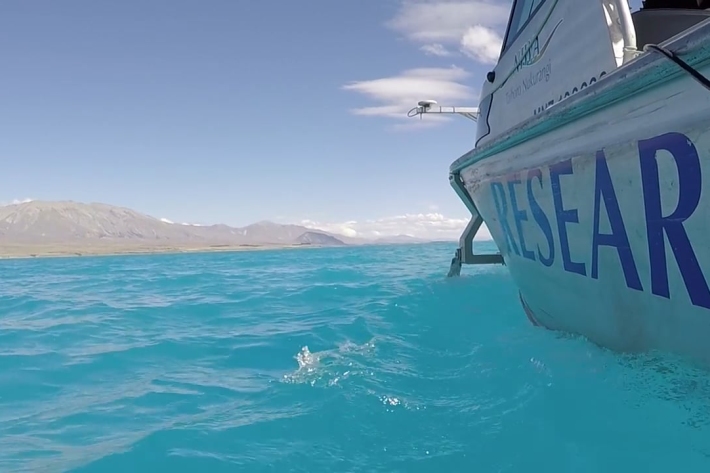-

Critter of the Week: Stupenda singularis
Dr. Michelle Kelly of NIWA and Dr. Paco Cárdenas of Uppsala University, have just published a paper describing an amazing sponge which was found on a NIWA cruise to the Colville Ridge, north-east of New Zealand. -

NIWA is seeking citizen scientists to help it document large brown seaweeds in New Zealand
News article27 May 2016Anyone can participate, and all you need is access to the sea, a smartphone or a camera and computer. -

Critter of the Week: Allostichaster insignis
Like other members of the family Asteriidae, Allostichaster is fissiparous. -

Critter of the Week: Histocidaris – The explosive urchins?
The Cidaroida is an order of very spiky and robust regular sea urchins, which can resemble something like a sputnik satellite or an underwater mine to the uninitiated. -
Critter of the Week: Geodia ewok - the ewok of the sponge universe
Geodia ewok Sim-Smith & Kelly, 2015 is an astrophorid sponge from the family Geodiidae. It was described, along with 16 other new species, in a recent publication by Sim-Smith & Kelly (2015) which increased the number of described New Zealand Geodiidae fauna from four to 22! -

Critter of the Week: Munida gregaria - The gregarious squat lobster
The gregarious squat lobster is commonly found in shallow coastal waters along the eastern coast of New Zealand’s South Island -

Taxonomy symposium honours leading scientist
News article27 April 2016Taxonomy is one of New Zealand’s most important sciences but its impact is often not widely known nor understood. -
Critter of the Week: Solanderia – the tree hydroid
Solanderia Duchassaing & Michelin, 1846, which is commonly known as the tree hydroid or sea fan hydroid, is a genus of athecate hydrozoan. -

Critter of the Week: Brisinga chathamica
Brisingida are an order of deep-sea dwelling sea stars that look more like brittle stars with a small disk that is distinctly set off from their 13-15 arms. -

Critter of the Week: Flabellum (the dentures of the sea)
This fan-shaped beauty is large and solitary, with a widespread distribution throughout New Zealand and mainly lives on soft substrate in a broad range of depths (0 – 3200 metres). -

Critter of the Week: Corallimorphus niwa
Corallimorpharia are a group of cnidarians morphologically intermediate between sea anemones and stony corals. Like sea anemones (Actiniaria), they lack a calcareous skeleton but their internal anatomy and nematocysts are similar to stony corals (Scleractinia). In fact, phylogenetic studies have shown that Scleractinia and Corallimorpharia are closely related. -

Lake Tekapo - a tsunami hazard?
NIWA scientists scan Lake Tekapo with the aim of finding out if submarine landslides can create a tsunami hazard for the Lake Tekapo township and hydropower infrastructure.

